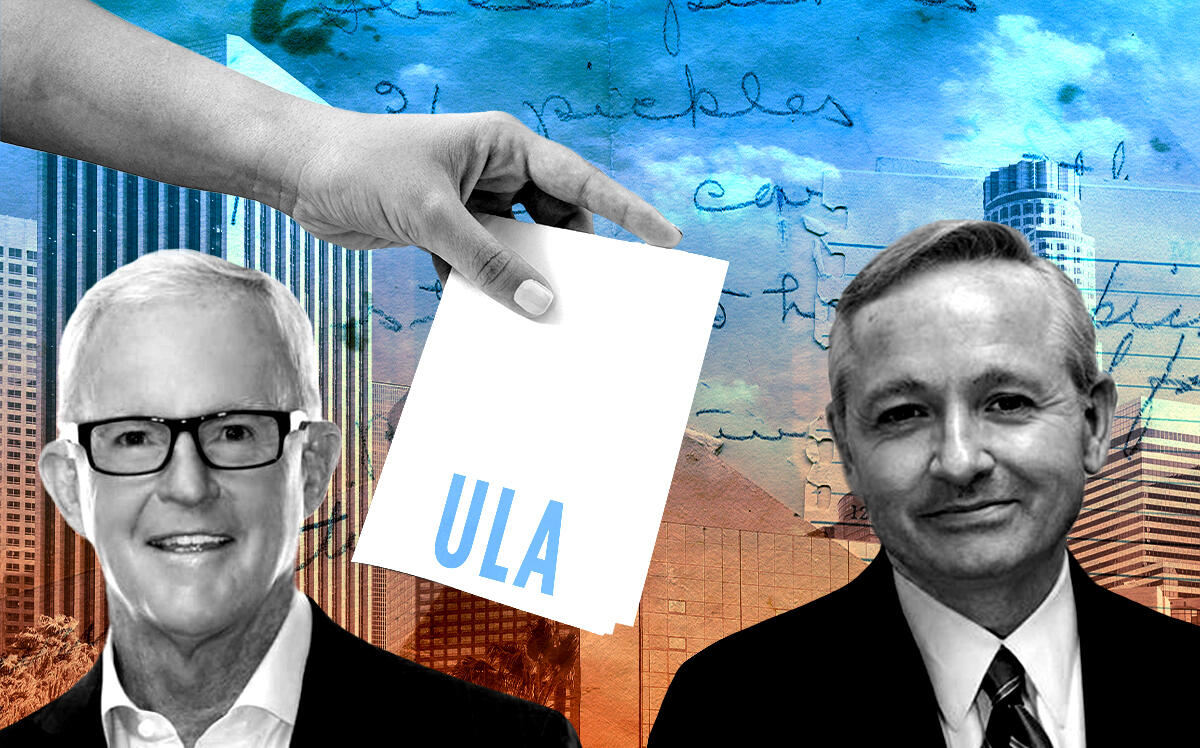Lenders have pulled back from making construction loans on ground-up multifamily projects in the city of Los Angeles since voters passed Measure ULA last fall to add weighty transfer taxes on commercial and residential sales over $4 million,
Developers told TRD that securing construction financing for market-rate projects in the city has become extremely difficult in light of a confluence of factors: high interest rates, borrowers kicking existing multifamily loan obligations down the road — but most of all, the uncertainty that has come with the new transfer tax.
“Investors are concerned and weary of investing in L.A., because of the increased regulations, taxes and red tape,” said Chris Tourtellotte, who oversees acquisitions and construction for LaTerra Development.
A number of institutional lenders have not handed out a single construction loan for a multifamily — or commercial — project in the city since the measure passed last November, according to a review of L.A. city property records.
Barclays, Citibank, Goldman Sachs, Bank OZK and Madison Realty Capital are among those lenders.
“There’s a much more shallow pool of lenders,” said Damian Gancman, the COO of multifamily developer Cityview. “When you don’t have that competition, you can’t drive to better terms.”
Some large insurance and pension firms are still in the market making loans.
Take, for example, one of the largest construction loans to close in the last three months. Related Companies scored $385 million in construction financing for a mixed-use project in Santa Monica. About $175 million of that sum came from the State Teachers Retirement System of Ohio. Almost all of the rest relied on tax-exempt bonds.
But “the capital spigot has largely shut off,” Tourtellotte said.
Safe bet turns sour
In the past, construction loans for ground-up multifamily have been considered “pretty safe,” according to Artem Tepler, who co-runs development firm Schon Tepler. “But now everyone is disagreeing on what that future value is.”
The transfer tax makes it difficult to estimate what a property’s value will look like over the next three, five or 10 years — typical hold periods for a multifamily developer and owner. And for construction loans specifically, lenders may not want to convert the loan into a traditional commercial loan when construction is finished, given the uncertainty around how much the asset will be able to sell for once it’s finished.
“A quick turnaround and quick sale — that’s going to be very hard to hit certain returns,” said Cityview’s Gancman.
Two developers interviewed by TRD gave a similar hypothetical situation.
Suppose a developer proposes a 300-unit, market-rate project in the city of L.A. Construction is estimated to cost $100 million.
After completion, the project is then sold for $150 million. The new transfer taxes don’t apply to the profit, but the sale price as a whole. For $150 million, the city would slap on a 5.5 percent tax, which comes out to $8.25 million. That wipes out 16.5 percent of the profit on the development.
“That’s a huge hit to your value,” said Gancman.
That hypothetical assumes the project can be sold for $150 million. Brokers and owners are anticipating that prices for multifamily buildings will start to dip, given rising interest rates, lower rental demand and the transfer tax.
“Market-rate multifamily lenders are extremely conservative right now,” said John Drachman at development and investment firm Waterford Property Company. “Rents flatten, cap rates move up — it’s extremely difficult to be an owner of market-rate multifamily in the city of L.A.”
Tides turning
Borrowers looking for construction loans are going to have to give up some of the sweeter, more attractive terms they could obtain when interest rates were low.
Construction loans are almost always floating rate, meaning the interest rate on the loan changes depending on a certain rate index, such as the federal funds rate.
Alex Valente at High Street Residential, a unit of CBRE’s Trammell Crow Company, said the firm just has to work in a higher budget level to make up for rate increases. And it has to give up other concessions and terms.
While interest rates were low, rents were rising and capital was pouring into projects, construction loans were often given at 65 or 70 percent loan-to-cost ratio — or 65 or 70 percent of what it would cost to build.
Now, developers say lenders — the few who are still handing out construction loans — aren’t willing to provide more than 55 percent. So for firms that rely on highly leveraged deals, many construction loans aren’t going to pencil out for them, the developers said.
At the end of November, High Street Residential scored construction financing from Comerica Bank for a 137-unit complex at 511 South Harbor Boulevard in San Pedro, located in the city of L.A. However, the loan was for 55 percent of the cost to build.
“A year ago, we probably could have gotten 60 or 62 percent,” Valente said.
Others aren’t able to accept the new terms. Tepler was looking to build a $13 million project in the city of L.A. late last year. His firm was offered a loan for about 55 percent of the total construction cost, but he needed to come up with another $2 or $3 million if he were to agree to the loan.
“We’re shelving the project,” he said. “It’s hard to make it pencil if you’re putting in more equity.”
Because of the tax, returns for equity investors are likely to be lower, given it takes away from profit, so these investors are often unwilling to put any more money in.
When asked what developers can do to help their chances at scoring a loan, Tourtellotte said consider moving over checking accounts.
“Many lenders are requiring depositary relationships,” he said. “They want cash deposits, they want you to move over your company’s treasury business. If you’re open to that, it helps.”
Also, lenders favor existing relationships and those with a track record of building out profitable projects.
Valente said Trammell Crow has had no real issue obtaining construction financing, though they’ve had to concede to better terms.
Future (lack of) supply
Ultimately, no construction money means no construction.
With more lenders on the sidelines, the supply of new apartments will be impacted — at a time when the city of L.A. and the state of California at large suffers from a housing shortage and affordability crisis.
About 11,500 new housing units were set to be delivered in the city of L.A. last year, according to RentCafé. That’s about 1 percent of the city’s total housing stock.
Compare that to Phoenix, a Sun Belt city that saw double-digit rent growth for almost a year. Nearly 13,000 units were delivered last year in Phoenix, according to brokerage Northmarq. Phoenix had a population of 1.63 million in 2021 — about 40 percent the size of the city of L.A.
And that was before the transfer tax and before construction lenders were pulling back.
“It’s going to limit supply and increase rents and increase the value of our portfolio,” said Tepler of the tax’s consequences. “It’s good for long-term holders.”
Gancman agreed: “Maybe it makes more sense to be a long-term holder,” he said. “Maybe that will become part of the pitch in L.A.”
Some, including Tepler, are becoming a trope of the California exodus.
“We’re looking at Texas,” he said. “These taxes make it infeasible.”
Read more



